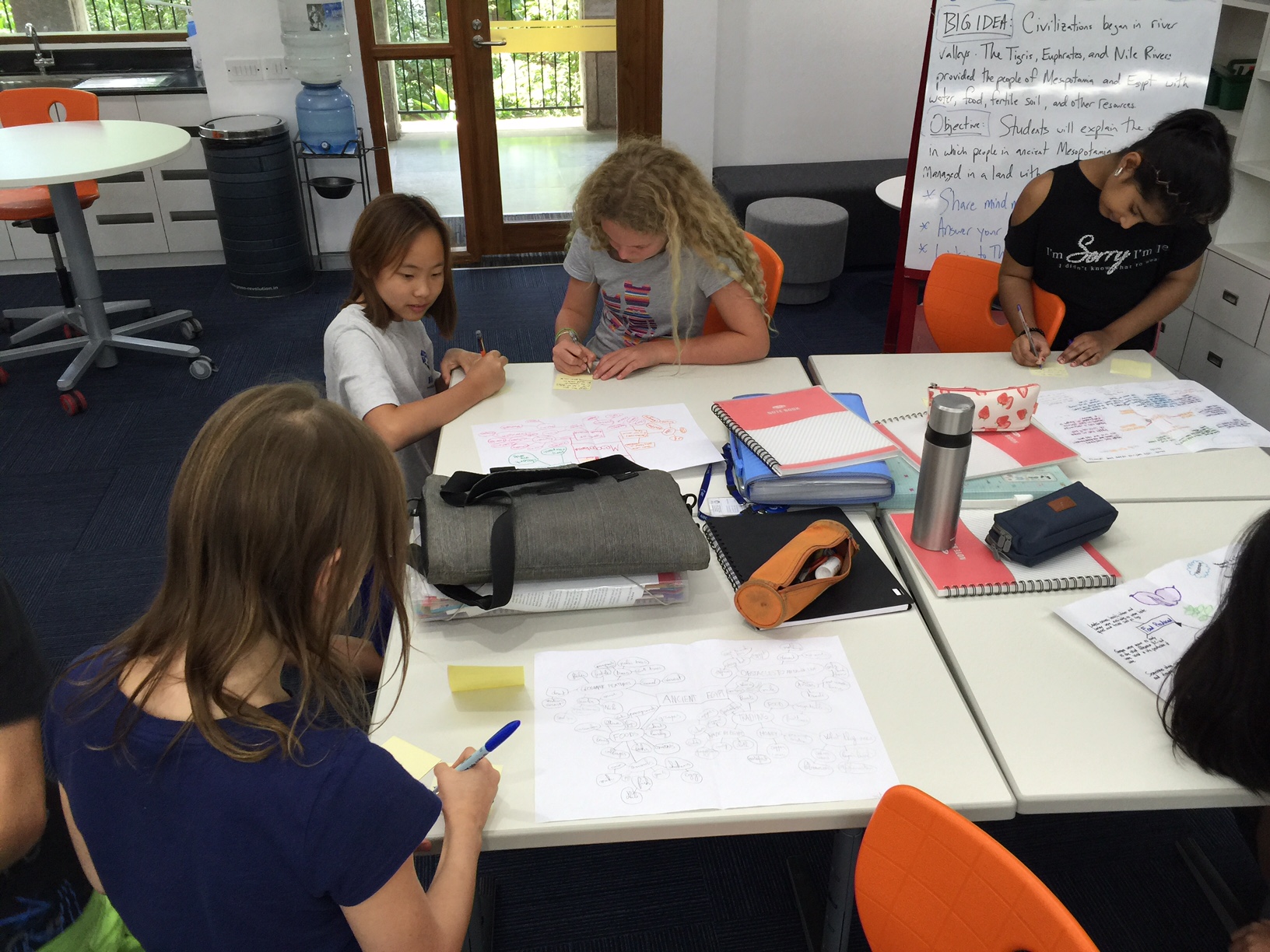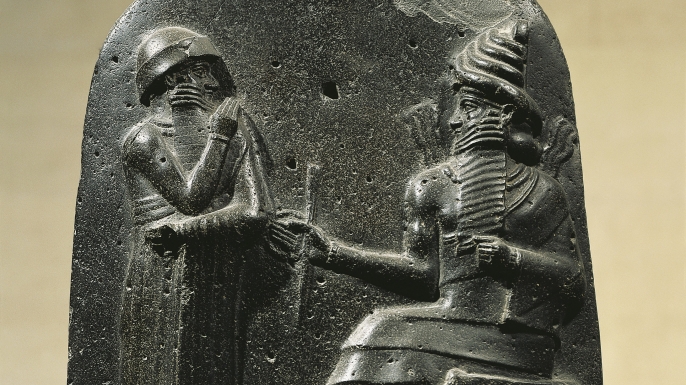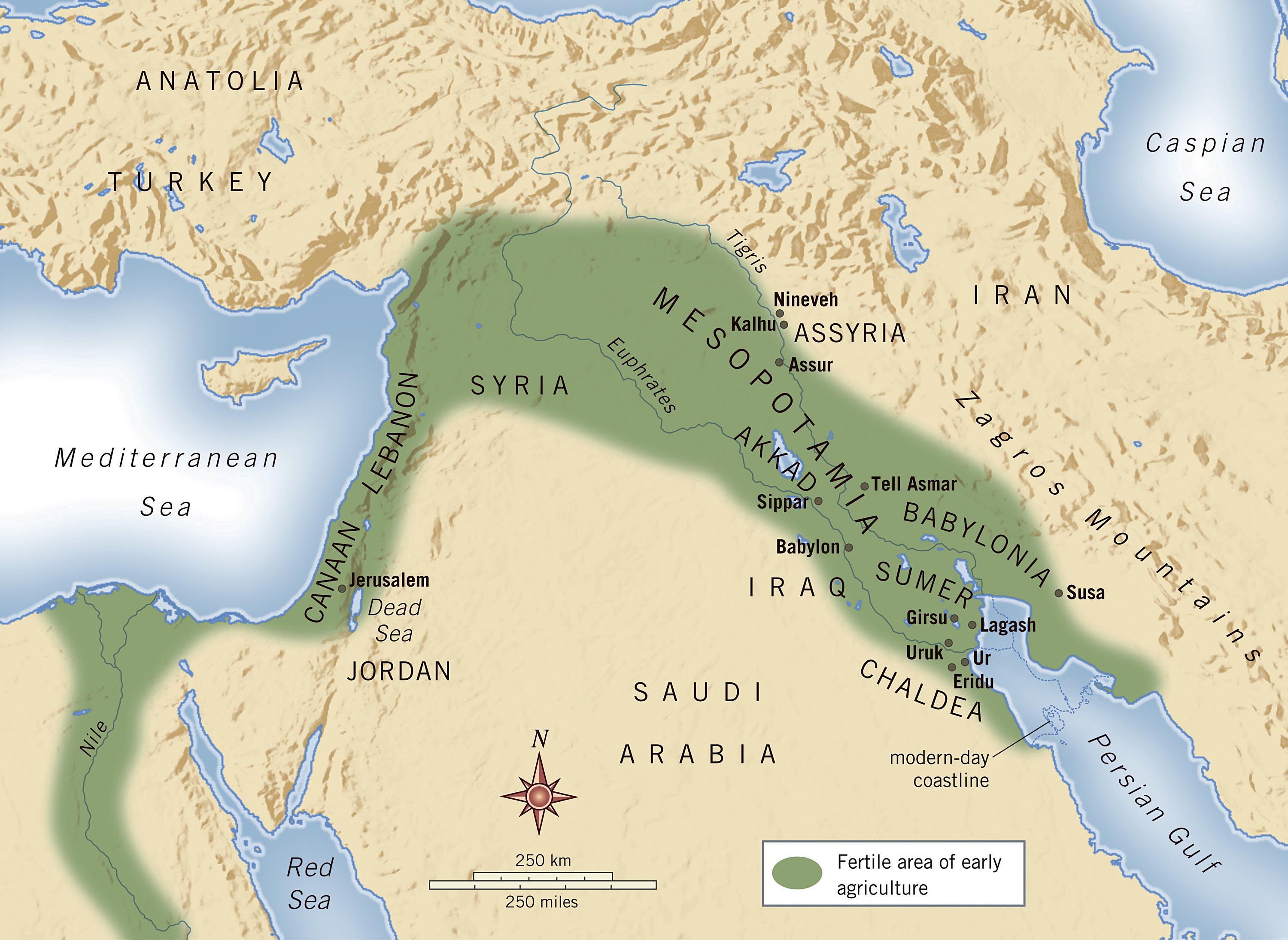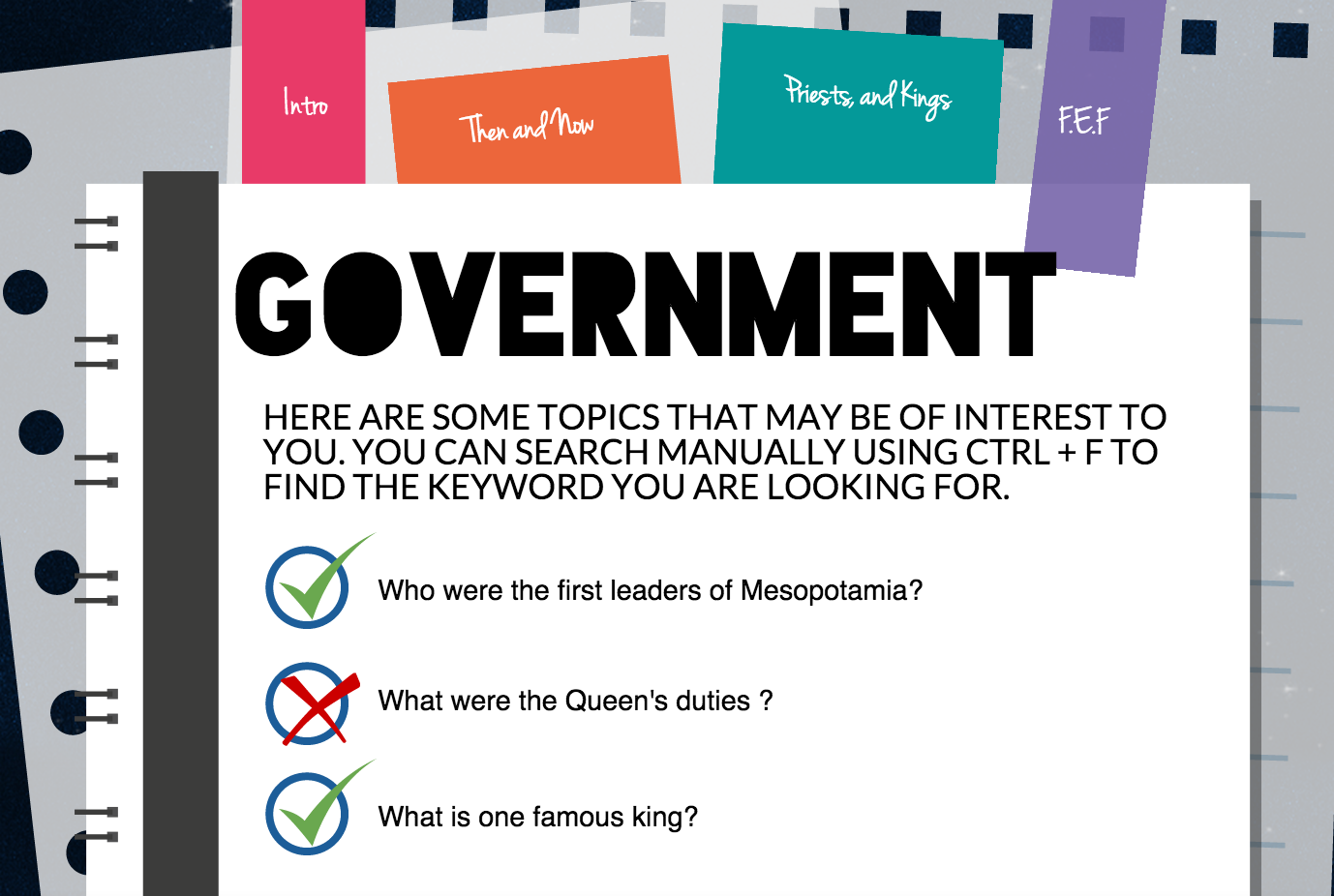Creation of Written Language
5 Dec
Cuneiform tablet from Mesopotamia

Tokens from Mesopotamia
In class this week, you will learn about the development of writing in Sumer, a society in ancient Mesopotamia (pages 101 – 103 in your textbook). Here is a video playlist that supports the reading and the work we will do to answer our supporting question (#2): How did the development of agriculture in Mesopotamia lead to the development of writing?
From Hunters-Gatherers to Early Farmers
29 Nov
This playlist features videos that show the gradual change from migration to our earliest villages and the development of agriculture. Our current question that we are focusing on is: Was the development of agriculture good for humans? Explain. I hope you find these videos helpful. If you find other helpful resources, please share them with me, and I will add them to our class site.
Hammurabi’s Code of Law
23 Aug
In class this week, we have been using Hammurabi’s Code of Law as a case study to explore the question: Why are laws or rules important? Here is a short video playlist that includes information about Hammurabi, his empire, and his code of law. We hope you enjoyed the lesson.
Social Studies Updates
19 Oct
Peer editing with a focus on capitalization (Photo by Rob Martin)

Photo by Rob Martin

Photo by Rob Martin

Photo by Rob Martin

Photo by Rob Martin


Peer editing (Photo by Rob Martin)
We have had a busy two weeks leading up to our Week Without Walls trip on Monday. You are in the process of finishing your Egypt or Mesopotamia Inquiry Project (G.R.A.P.E.S. Historical Themes), and most of you have also finished your latest Out of Eden Learn activity, Footstep #2, Creating a Neighborhood Map. I have shared some photos here of some of our work, and will share some more here on the class blog and my Twitter handle (@DigitalNomadRob – #G6SSAISC). Out of Eden Learn has already seen some of your maps and has shared them as well. Great job!
You will be given class time tomorrow and Friday to work on your project. Please finish them over the weekend, if you do not finish tomorrow. When we return from Week Without Walls on Tuesday, November 1 (No school on Monday, Oct. 31), we will only have four days left in trimester 1. Our goals for the rest of the trimester are:
-
To make sure everyone has finished their summative (final) project.
-
To make sure you have finished Footstep #2 (Out of Eden Learn) and posted it on their site.
-
Written comments on other posts from our OOEL walking party – Part 3 of Out of Eden Learn, Footstep #2.
When these things are done, you will need to write a reflection and add both #1 and #2 above to your e-portfolio (More on this later!). Keep up the good work!
Mesopotamia vs. Egypt
23 Sep
This is a great video that features a comparison between Mesopotamia and Egypt.
A Busy Week!
11 Sep
Students –
We learned about Paul Salopek’s Out of Eden Walk last week. Next, you will join our walking party for Out of Eden Learn and start your first footstep. Here are the towns or cities who will be in our walking party:
OUR TWO WALKING PARTIES (B/D BLOCKS AND F/H BLOCKS):
Location: from the U.S.A. Atlanta, Georgia; Houston, Texas; Chicago, Illinois; Danville, California; Marblehead, Massachusetts; Oak Hill, Florida; Portland, Oregon; Oxnard, California; Hockessin, Deleware. From other countries: Accra, Ghana
Here are two photos of students learning about Paul Salopek and his journey.

Photo by Rob Martin

Photo by Rob Martin
Finally, students shared their Egypt and Mesopotamia mind maps in a gallery walk and we worked on developing skills in giving feedback and learning what is helpful (good) vs. Not so helpful or detailed feedback (Mmmmm….not so good). We will continue to work on this throughout the year because one thing you will be doing a lot of on Out of Eden Learn is giving feedback and asking questions to other students in our walking party.

Helpful, detailed feedback on the right vs. Not so-detailed feedback. We will continue to work on this skill. (Photo by Rob Martin)

Gallery Walk for our Mind Maps

Gallery Walk
The Long Dry Spell (role play)
24 Aug
Image source: http://www.rappler.com/move-ph/issues/disasters/127991-how-vulnerable-mindanao-el-nino
“The brutal heat makes it difficult to work. Yet every day you must walk to the river with animal-skin bags to get water for the plants. You repeat the trip hour after hour, until your legs feel like they won’t support you any longer. Your back aches from carrying water and bending over your crops. The plants need every drop of moisture they can get. But the heat of the sun seems to evaporate the water as soon as it hits the ground.” – The Long Dry Spell” (pages 80 – 81).
https://www.instagram.com/p/BJee8NwD5AG/?taken-by=digitalnomadrob
What makes my life easier?
15 Aug
Image source: Morguefile
What inventions do you benefit from today? Think about one you carry with you and one at home that makes your life easier. Add your answers to the comment section.
Mesopotamia – All you want to know!
17 Nov
Here is a great video playlist with many different documentaries and more about Mesopotamia. The Civilizations documentary is really good (6 part series here).
Hammurabi’s Code of Law
27 OctWe are currently learning about Hammurabi’s Code of Law. Here is some information:
The Code of Hammurabi refers to a set of rules or laws enacted by the Babylonian King Hammurabi (reign 1792-1750 B.C.). The code governed the people living in his fast-growing empire. By the time of Hammurabi’s death, his empire included much of modern-day Iraq, extending up from the Persian (Arabian) Gulf along the Tigris and Euphrates rivers.
The code is best known from a stele made of black diorite, more than seven feet (2.25 meters) tall, that is now in the Louvre Museum in Paris. The stele was found at the site of Susa, in modern-day Iran, by excavators who were led by Jacques de Morgan at the beginning of the 20th century. Scholars believe that it was brought to Susa in the 12th century B.C. by an Elamite ruler who subsequently erased a portion of it in preparation for creating an inscription of his own.- (from Live Science)
Why are laws necessary? What basic ideas about the law did Hammurabi’s Code set up?
Here is an interesting article that a student shared with me last year – 8 Things You May Not Know About Hammurabi’s Code.
Creation of a Written Language – Cuneiform
17 Oct
Theo Van Den Hout, a professor of Hittite and Anatolian Languages, tells us about scribes in Mesopotamia and Anatolia. This short video was made for the Oriental Institute Museum special exhibit “Visible Language: Inventions of Writing in the Ancient Middle East.” In Chapter 3, you learned about scribes, the people who specialized in writing, the stylus, which is the instrument they used to write on clay tablets, and cuneiform, the wedge-shaped writing. Read more about the development of writing and pictograms on the British Museum’s website on Mesopotamia. Why do some historians identify the beginning of history with the beginning of writing? Tell me an interesting fact or two you learned about writing in Mesopotamia from one or more of these videos.
Achievements of the Sumerians
14 OctThis playlist features video clips that review the legacy and achievements of Mesopotamia. They are a good review of things we have learned in class. Essential Questions to consider:
1) What new tools did the Sumerians invent?
2) Why was the invention of cuneiform (writing) an important development?
If you like legos, you might find the first two videos creative and humorous.
The First Civilization & Traits of a Civilization
22 SepWe are currently learning about Sumer, the first civilization, in southern Mesopotamia. Sumer was made up of several city-states, including Kish, Nippur, and Ur. Our current lesson also focuses on the traits of a civilization.
Geography of Mesopotamia
17 Sep
This playlist supports what we are learning in the first lesson of Mesopotamia. These videos would be helpful to review. :>)
Where is Mesopotamia?
15 Sep
Screenshot of Euphrates River from Google Maps. You can see how fertile (green) the land is near the river (vs. the desert).
Mesopotamia is a name for the area of the Tigris–Euphrates river system, corresponding to modern-day Iraq, Kuwait, the northeastern section of Syria, as well as parts of southeastern Turkey and of southwestern Iran.
More Infographics
2 FebHere are a few more screenshots of infographics from Mrs. Hall and Ms. Jaya’s classrooms. To see the entire infographic, click on the links below. These particular infographics were among the best ones created for our last unit on Mesopotamia.
Alice and Vinay
Tejas and Rahul
Yewon, Rhea, and Aisyah
Miyu and Alice L.
Sunny, Rin and Taeyeon
Celebrating Infographics
1 FebWe wanted to share some of the infographics or electronic posters ( made with Piktochart) students created at the end of our last unit. Many were very good! The images above are screenshots, so you cannot see the full image. Click on the links below to see the final products of some of them. These are a few from Mr. Martin and Ms. Jaya’s class. We appreciate the tech support from Ms. Laura Blair. More Piktocharts from Mrs. Hall and Ms. Jaya’s class will be posted in a separate blog post. All students should have added their Piktochart to their e-portfolio
Samara and Yu-Jin – the best of the best!
Alexandre and JuYang
Kennedy and Perrine
Soo Youn and Mutsumi
Woosung and Sriya
Aaron and Aditya
New Unit: Egypt
14 JanWelcome back and to a new unit in Social Studies – Egypt! We have recently completed our unit on Mesopotamia (ancient Middle East). Check out this really cool history video comparing the ancient civilizations of Mesopotamia and Egypt. This video comes from the Utah System of Higher Education and Dr. Nancy Ross. Enjoy!
Mesopotamia Test
9 Dec Your unit test for chapters 3 (lesson 1, 2, 3) and 4 (lessons 1) will be on:
Your unit test for chapters 3 (lesson 1, 2, 3) and 4 (lessons 1) will be on:
Monday (Dec. 15th) Block H (Hall), G (Martin) or Tuesday (Dec. 16th) Block B (Hall), D (Martin)
The study guide is on our Moodle page. Please review this document carefully! How can you prepare for the test
-
Review the above-mentioned chapters and lessons in your textbook – re-read them! Pay attention to the lesson objectives, main ideas, and the lesson summary.
-
Review vocabulary and notes on our Moodle page and in your notebook.
-
Use the blog (links and videos), especially the Classzone Review site to practice and review.
-
Find a study-buddy, someone who will help you, not distract you!
Here is a playlist featuring videos about Mesopotamia. You might find some of these videos or documentaries helpful when reviewing what you have learned.
Hammurabi’s Code of Law
1 Dec
Why are laws necessary? What basic ideas about the law did Hammurabi’s Code set up?
Here is a link that Samara shared with me – 8 Things You May Not Know About Hammurabi’s Code
Out of Eden: Mother Rivers
30 NovPaul Salopek’s Out of Eden blog features a new dispatch. Paul is still in Turkey and moving east. You can read his new dispatch (blog post) entitled Mother Rivers. It features information on the effects of dam building on the Tigris and Euphrates Rivers:
In Turkey, hundreds of dams big and small stopper the headwaters of the Tigris and Euphrates, the two most fabled rivers in history, the streams that moisten the Fertile Crescent. The government insists that these tons of poured concrete are essential for agricultural self-sufficiency, for irrigation, and through hydropower to help reduce the country’s dependency on foreign energy. Environmentalists and archaeologists disagree. The rivers are throttled, they say. And if the Tigris and Euphrates can be deemed the mothers of modern urban life—the nurturers of history’s first cities—then the frenzy of construction, they say, represents a form of parental abuse.
Read this National Geographic article about the dams. Paul also introduces us to his two guides.
Cuneiform – Development of Writing
23 Nov
Watch any of the videos in this playlist and comment on something you learned about the development of writing in Mesopotamia. Why do historians identify the beginning of history with the beginning of writing?
Life in Sumer
18 Nov





















Recent Comments